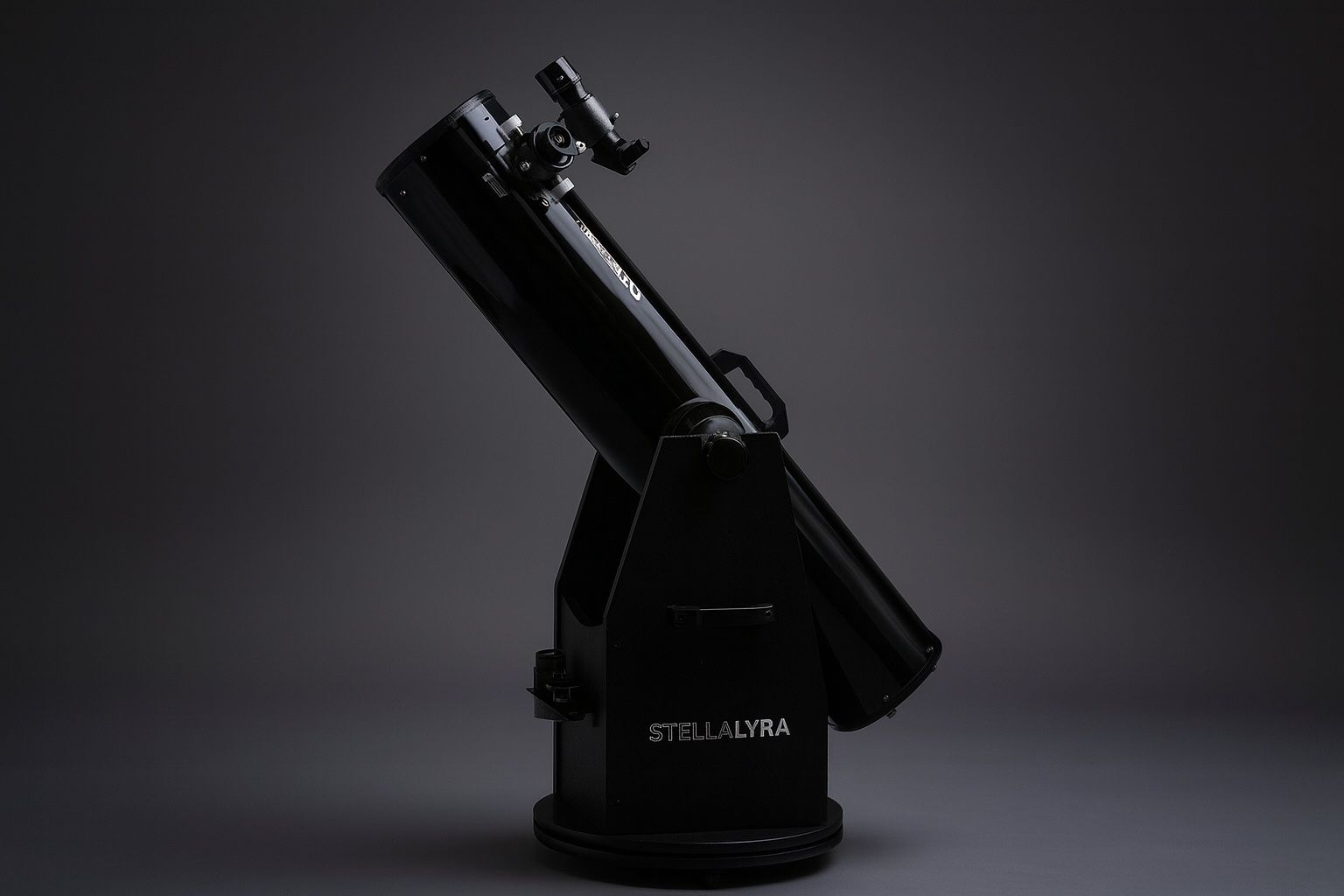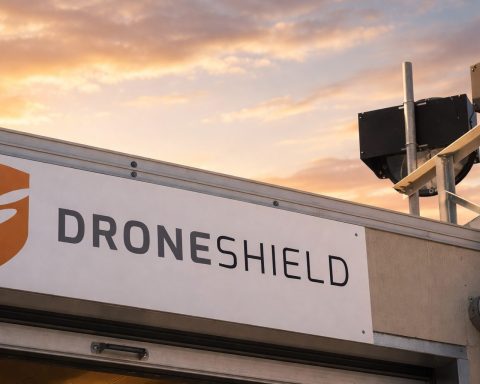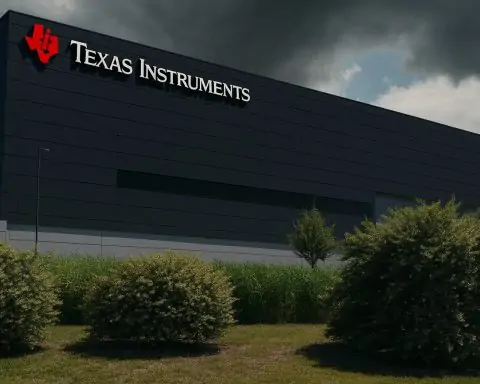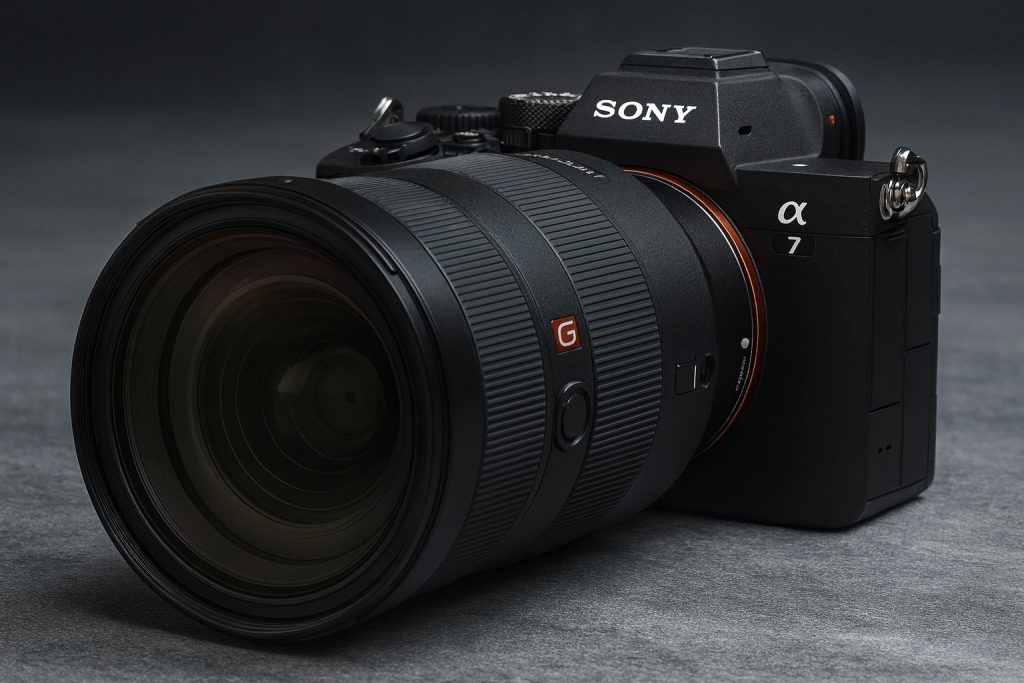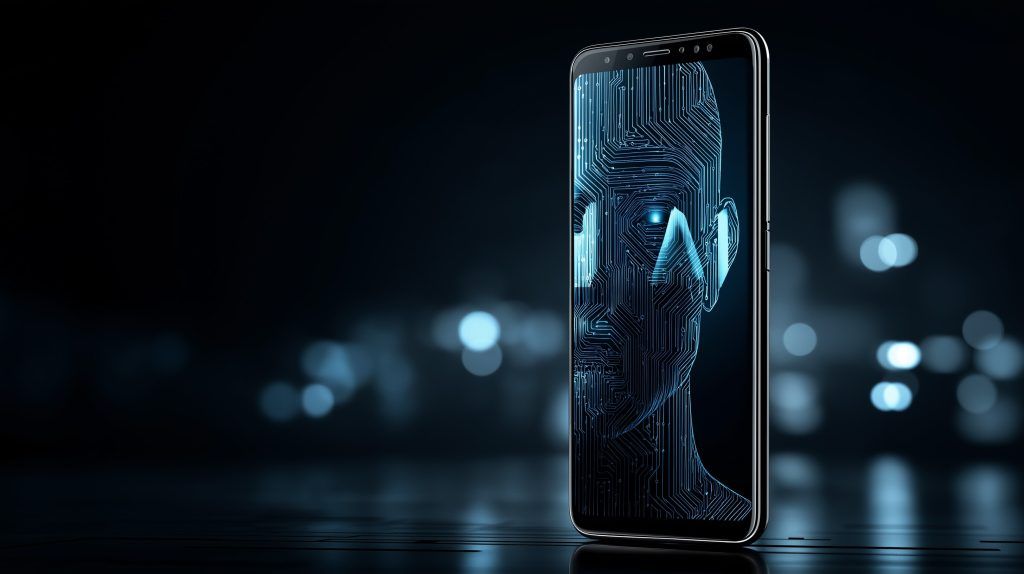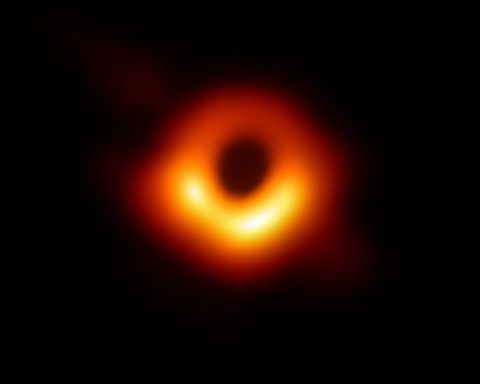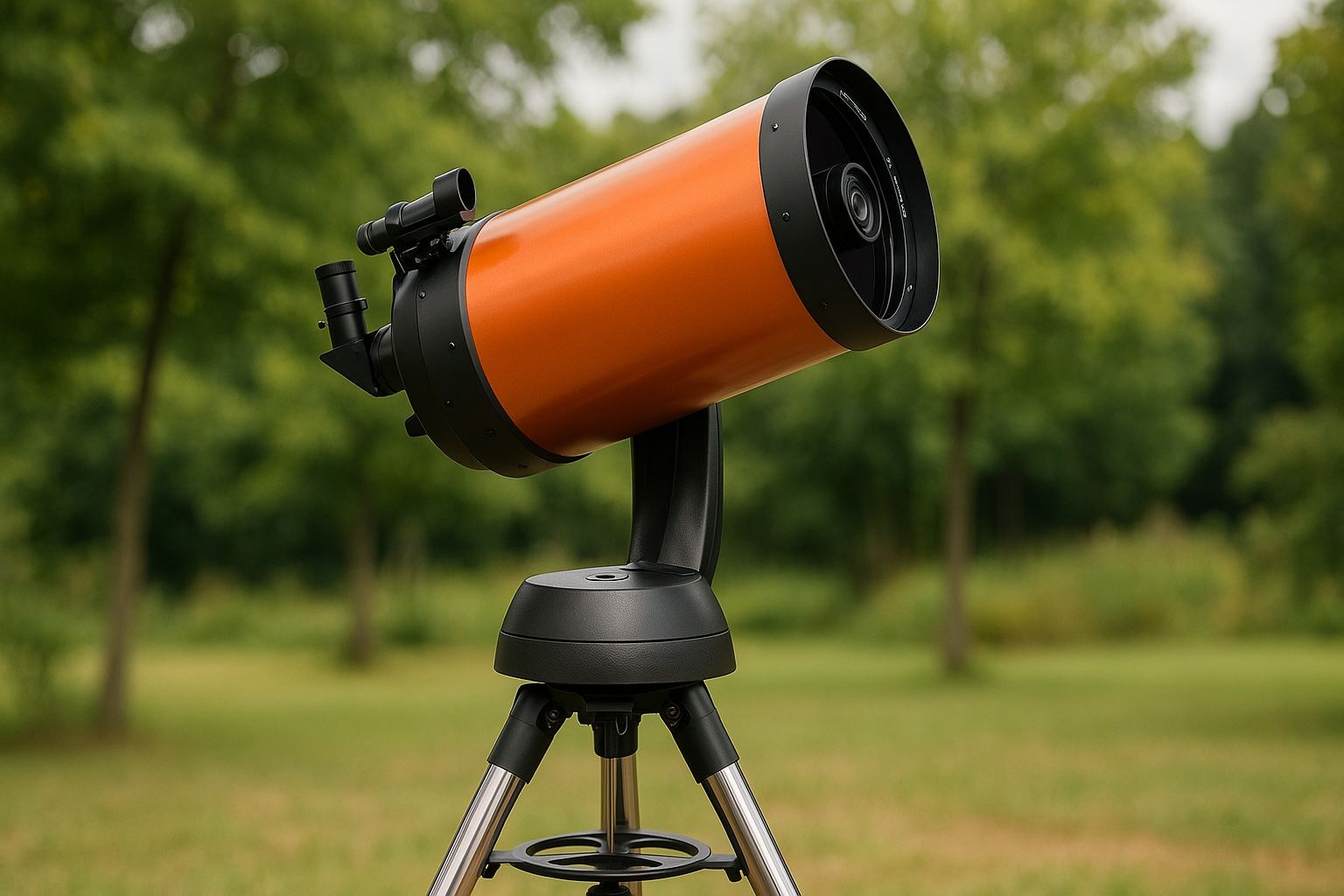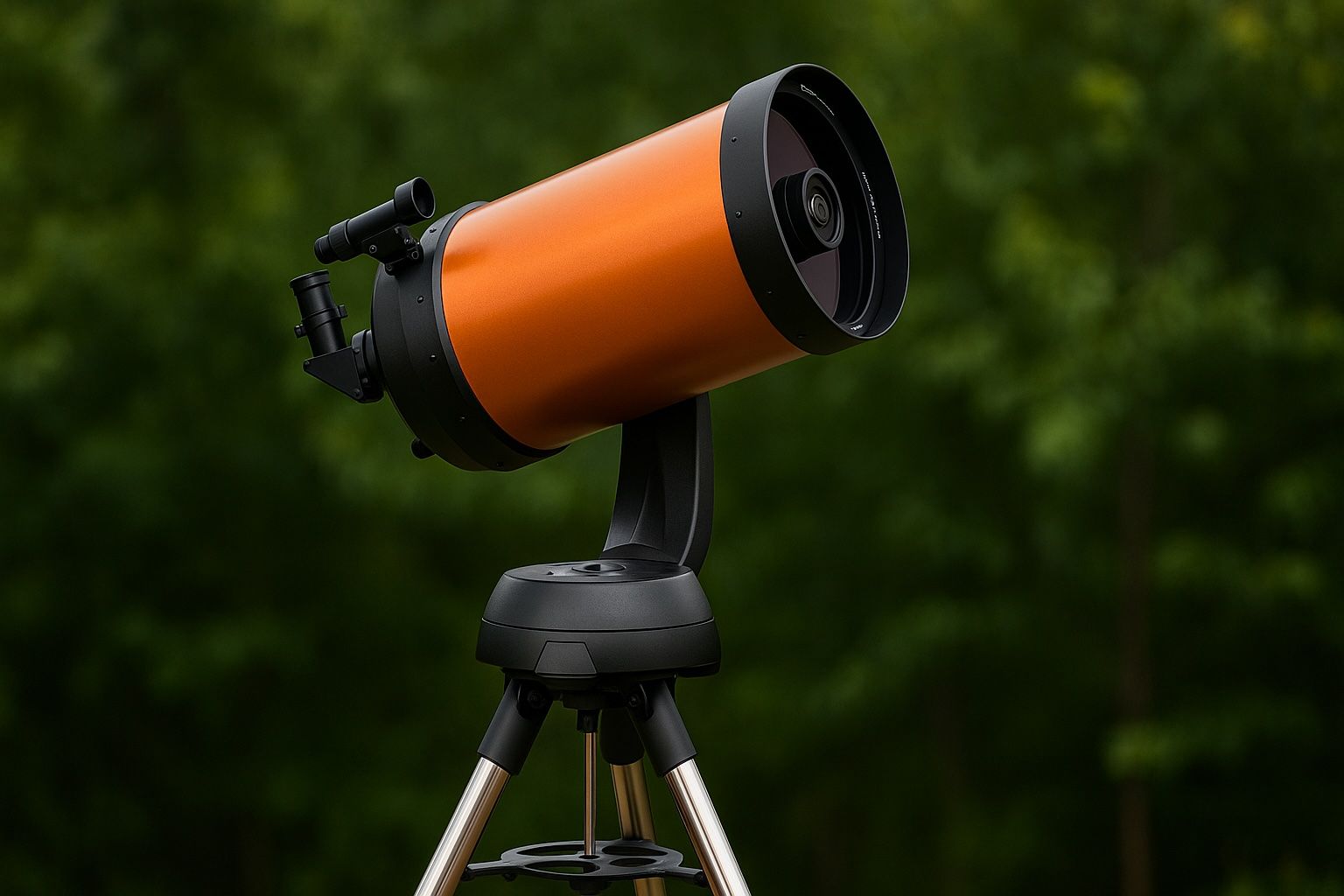- All three models are 8″ f/6 Newtonian Dobsonians with ~1200 mm focal length and a 203 mm parabolic primary.
- StellaLyra 8″ f/6 and Apertura AD8 use enhanced aluminum coatings with ~93% reflectivity and a quartz overcoat, while the Orion SkyQuest XT8 uses traditional aluminum coatings with ~89–91% reflectivity.
- The StellaLyra 8″ and Apertura AD8 feature 2″ dual-speed Crayford focusers (10:1 fine focus), while the Orion XT8 Classic uses a 2″ single-speed Crayford (the XT8 Plus adds a dual-speed).
- All use Dobsonian wooden mounts; StellaLyra/AD8 employ a GSO-style base with Lazy Susan azimuth bearing and large tension knobs, while the XT8 uses the classic CorrecTension springs and plastic bearings.
- StellaLyra includes a 30 mm 2″ SuperView eyepiece, a 9 mm 1.25″ Plössl, an 8×50 RACI finder, 2″–1.25″ adapter, 35 mm extension tube, and a cooling fan; Apertura AD8 adds a laser collimator, a Moon filter, and a 4-slot eyepiece tray; Orion XT8 Classic ships with a single 25 mm Plössl and a red-dot finder.
- User experience is hands-on and manual; all are push-to Dobsonians with no electronics, requiring occasional collimation and mirror cooldown.
- The total system weight is about 20–24 kg across models; StellaLyra is listed at 20.9 kg (tube ~9.5 kg, base ~11.4 kg), while Orion XT8 totals around 18 kg (tube ~9 kg, base ~9 kg).
- In 2025, Apertura/High Point offers a 2-year warranty plus 3-year accident replacement; Orion XT8 offers a 1-year warranty; StellaLyra via FLO offers a 2-year warranty.
- Pricing (2025): StellaLyra 8″ UK around £429–£449 (~$540–$570); Apertura AD8 MSRP $799.95, often on sale around $699; Orion XT8 Classic around $629–$679, XT8 Plus around $749.
- Availability: AD8 is often in stock at High Point Scientific but can backorder; XT8 is generally in stock; StellaLyra is Europe-focused via FLO, with US import marketed under other branding.
Which 8-inch Dobsonian reigns supreme? In the world of amateur astronomy, an 8″ f/6 Dobsonian reflector is often hailed as the ultimate beginner’s telescope – big enough to wow you with deep-sky views, yet manageable and affordable. Three popular contenders dominate this category: the StellaLyra 8″ f/6, the Apertura AD8, and the Orion SkyQuest XT8. All three share the same optical formula (8-inch diameter, ~1200 mm focal length at f/6), but each comes with its own set of features, accessories, and brand quirks. In this report, we pit them head-to-head on optical performance, build quality, accessories, user experience, portability, support, reviews, pricing, availability, and even future outlook. By the end, you’ll know which of these “light buckets” hits the sweet spot for your stargazing needs.
Optical Performance
When it comes to optics, all three telescopes deliver essentially similar performance – after all, an 8″ f/6 Newtonian mirror is a proven design that “surrenders nothing to more expensive 8” telescopes” in terms of view quality [1]. Each scope’s primary mirror is a parabolic 203 mm diameter, eliminating spherical aberration and gathering about 78% more light than a 6-inch, and over 16× more light than a common 50 mm beginner scope [2]. In practical terms, under a dark sky an 8″ Dob can reveal thousands of celestial objects: from the Moon’s craters and planets’ details to faint galaxies and nebulae. As one expert review put it, the 8″ aperture is a “brilliant all-rounder [telescope] for both beginner and intermediate astronomers,” equally capable of exciting lunar/planetary views and deep-sky exploration [3].
All three use standard coatings on the mirrors, but the StellaLyra 8″ and Apertura AD8 (both made by GSO in Taiwan) boast enhanced aluminum coatings with ~93% reflectivity and protective quartz overcoat for durability [4]. The Orion XT8 (made by Synta, China) uses a traditional aluminum coating (~89-91% reflectivity) on its primary mirror – optically, the difference is minor in practice, and users report that quality control is good across all brands (these mass-produced mirrors are usually diffraction-limited). One Cloudy Nights member summed it up: “All dobs on the market will be of near identical optical quality. The differences will mainly be about accessories… any major brand 8 inch dob will be a good scope.” [5] In other words, don’t expect one to show dramatically better views than the others – any decent 8″ mirror, once cooled and collimated, can produce stunning images limited more by your local sky conditions and experience than by the brand.
What can you see? With any of these 8″ Dobs, you’ll enjoy jaw-dropping views of the Moon and planets and resolve many deep-sky objects. The focal length of ~1200 mm (f/6) hits a sweet spot: you can achieve high powers for planets but also wide fields for star clusters. On a steady night, expect to see Jupiter’s cloud belts and Great Red Spot, Saturn’s rings with the Cassini Division, and subtle details on Mars when near opposition [6]. Lunar views are incredibly crisp – one reviewer said through an 8″ Dob “we felt we could almost reach out and touch the craters” [7]. Under dark skies, galaxies like M31, M51, or M82 reveal structure, and globular clusters (e.g. M13 in Hercules) begin to resolve into a “spray of stars” at the eyepiece. A BBC Sky at Night test of the StellaLyra 8″ reported “the field of view was lovely and flat, with stars sharp from edge to edge” using the included 30 mm wide-field eyepiece (after adding a focus extension tube) [8]. High-power views with a 9 mm eyepiece were “very clean… able to resolve stars in towards the core” of M13 and showed detail in the Ring Nebula (M57) [9] [10]. In short, optically all three are capable of wow-worthy views, provided you take the time to collimate occasionally and let the mirrors cool for best images.
Mechanical Build Quality
The overall build of these Dobsonians is robust, though there are some differences in mechanics and materials:
- Optical Tube: All three use a steel tube OTA (Orion’s is enamelled steel; StellaLyra/Apertura use powder-coated steel). The tubes are ~48 inches (1.2 m) long and about 9.25″ in diameter. Reviewers note the constructions feel solid, with “minimal plastic and robust accessories” used throughout [11]. The primary mirror cells are metal and collimation is done via large hand knobs on all models – a plus, since no tools are needed to adjust alignment. The StellaLyra in particular earned praise for its oversized collimation knobs, which made fine-tuning quick and easy (collimated “in under five minutes” during testing) [12].
- Focuser: Here we see a big difference. The StellaLyra 8″ and Apertura AD8 come with a 2″ dual-speed Crayford focuser (10:1 fine focus knob), machined in metal, which offers very smooth and precise focusing [13] [14]. This is a feature usually found on higher-end scopes, and it helps in achieving critical focus at high power (e.g. for planets). The Orion XT8 Classic, on the other hand, includes a simpler 2″ single-speed Crayford focuser – still “high-quality… not a single plastic component” [15] and now even upgraded with a brass compression ring in newer units [16], but it lacks the fine-focus knob. (Orion’s upscale XT8 Plus model does have a dual-speed focuser, to be discussed later.) In practice, Orion’s stock focuser works well – it earned a 4/5 rating from one expert reviewer [17] – but the finer control of the StellaLyra/Apertura focuser is a welcome luxury for things like focusing on Jupiter’s cloud bands or splitting tight double stars.
- Mount and Bearings: All three use the Dobsonian alt-azimuth rocker base made of wood composite. The Orion XT8 base is a classic design with Teflon pads for azimuth motion and altitude trunnions that ride on plastic bearings, stabilized by Orion’s spring-tension system (two pull-springs dubbed “CorrecTension” that keep the tube seated and add friction). It’s a simple but effective system, though some users find the springs a bit cumbersome. In contrast, the Apertura AD8/StellaLyra base is a more deluxe GSO design: the azimuth motion uses a “Lazy Susan” roller bearing for smoother 360º rotation [18] [19], and the altitude hubs have large adjustable tension knobs and the ability to slide the bearing position along the tube to balance heavy eyepieces [20]. This means you can easily fine-tune how stiff or free the motion is in both axes. Users consistently praise the GSO Dob mounts for their “buttery smooth” motion – making it easy to track objects by nudging the tube [21]. The StellaLyra’s base even includes a built-in azimuth tension adjustment knob [22]. In comparison, Orion’s XT8 Classic relies on the springs (no tension adjustment knob on the base), which works okay but offers less tweakability. An Orion XT8 owner on the forums confessed: “I very much dislike the CorrecTension springs on the XT compared to the adjustable tension of the Zhumell [same design as Apertura]” [23]. Notably, the newer Orion XT8 Plus has addressed this by adding an adjustable altitude tension knob instead of springs [24], more akin to the GSO design.
- Materials & Finish: The base boards on all three are wood composite (particle board/laminate). StellaLyra’s base was noted to be strong and well-finished overall, though one review pointed out that some edges were not fully sealed with paint, making moisture a concern if left damp [25]. Orion’s base is similar (matte black laminate). The Apertura’s base includes an integrated eyepiece tray and carry handle cut-outs. All three tubes have a durable painted finish (StellaLyra in glossy black, Apertura in white, Orion in black). Small touches differ: for example, StellaLyra/AD8 focusers use compression rings for both 2″ and 1.25″ eyepieces (preventing set-screw scratches) [26], whereas older Orion classics did not (new ones do for the 2″). The overall impression from reviewers is that StellaLyra and Apertura (GSO-made) feel “premium” for their price, with build quality on par or better than Orion. As BBC’s reviewer put it: “The build quality was largely excellent, with minimal plastic… While the assembled setup is heavy, the tube is easily lifted away from the base, which itself can then be carried using a handy handle.” [27] [28] The Orion isn’t flimsy by any means – it’s a tried-and-true design that has changed little in decades, indicating Orion got a lot right – but straight out of the box the GSO variants have a few more refinements in mechanical design.
Included Accessories
One of the biggest differentiators between these models is the accessory package that comes with each. Here’s what you get with each telescope, and it’s immediately clear the StellaLyra and Apertura aim to be “complete kits” while the Orion (at least the Classic version) is more bare-bones:
- StellaLyra 8″ f/6: 30 mm 2″ SuperView wide-field eyepiece (~68° apparent field) for low-power views, 9 mm 1.25″ Plössl eyepiece for higher magnification, an 8×50 right-angle correct-image (RACI) finderscope, a 2″ to 1.25″ adapter, 35 mm extension tube (needed for focusing some 2″ eyepieces), and a cooling fan pre-mounted on the primary mirror cell [29] [30]. These are above-average accessories – the 30 mm SuperView especially is a decent wide-field starter eyepiece that gives a ~2° true field, and the RACI finder is far more ergonomic than a cheap straight-through finder. (Note: Some retailers in Europe even bundle an extra 15 mm Plössl with the StellaLyra [31], but this isn’t universal.) What’s not included? StellaLyra does not include a laser collimator or any filters – you’d have to collimate manually (a simple collimation cap costs a few pounds) or buy a laser. Also no simple red-dot finder is included, which some beginners prefer for initially aiming at bright targets (more on that later).
- Apertura AD8: Essentially the same base package as StellaLyra plus a bit more. The AD8 includes a 30 mm 2″ SuperView and 9 mm Plössl, the same 8×50 RACI finder, 2″-1.25″ adapter, extension tube, and cooling fan – and on top of that: a laser collimator, a 1.25″ Moon filter, and a 4-slot eyepiece tray on the base [32] [33]. High Point Scientific (the U.S. retailer of Apertura) really markets the “extras” – by their estimate, over $200 worth of accessories are included free [34]. This means out-of-the-box an AD8 owner can collimate the mirrors with the laser, quickly cool the mirror with the fan, use the Moon filter for comfortable lunar viewing, and has both low and high power eyepieces to start (plus the finder, etc.). It’s arguably the most complete accessory bundle of any 8″ Dob on the market. One astronomy blogger went so far as to say the AD8 “comes with all the required accessories out of the box… No other telescope provides as much bang for your buck.” [35] Another reviewer stated the AD8 “greatly outperforms its price tag of well below $600,” given all that’s included [36]. The only things you might still want are additional eyepieces for intermediate magnifications and maybe a better high-power ocular than the basic 9 mm Plössl (it has a short eye relief). But unlike with some scopes, nothing is immediately “needed” – you can start observing effectively on night one.
- Orion SkyQuest XT8 (Classic): Orion’s base 8″ Dobsonian has traditionally shipped with far fewer accessories. Currently it includes one 2″ eyepiece (usually a 25 mm Plössl yielding 48×) [37], a simple red-dot finder (a reflex sight) [38], and a 1.25″ adapter. In some bundles Orion also adds a smartphone adapter for afocal photography (to mount a phone camera at the eyepiece) [39], and an Orion catalog or guide book. Notably, no second eyepiece is included (older Orion packages years ago provided a 10 mm too, but not anymore), no RACI or optical finder (the red-dot is of very limited utility under light-polluted skies [40]), and no collimation tool or fan. This spartan kit means a beginner will likely have to spend extra on eyepieces (for higher power) and possibly a better finder. In fact, one expert review of the XT8 bluntly says: “The XT8 is a great telescope, but you will need to go shopping for some additional eyepieces and probably a better finderscope… With that money, you could buy a vastly superior 8″ Dob such as the Apertura AD8.” [41] Orion likely keeps the XT8’s price lower by not bundling extras, giving buyers the option to add what they want. Important: Orion does offer the XT8 Plus (~$750) version which upgrades the accessory set significantly – it comes with a dual-speed focuser, a 2″ 28 mm “DeepView” eyepiece and 1.25″ 10 mm Plössl, a 2× Barlow lens, a 9×50 RACI finder, a cooling fan, and a collimation cap, plus nicer spring-free altitude bearings [42] [43]. Essentially the XT8 Plus tries to match the GSO scopes’ features (and it mostly succeeds). However, even the Plus omits a 2″ wide-field eyepiece of the quality of the SuperView and does not include a laser collimator or Moon filter [44], so the Apertura AD8 still edges it out on the accessory front and usually costs less when on sale. If you’re comparing Orion vs Apertura new, this is a key point: the Apertura’s package gives a beginner everything needed immediately, whereas the Orion will likely need additional purchases (or entice you to step up to the pricier Plus model).
In summary, Apertura AD8 (and its twin, StellaLyra) clearly wins on accessories – one reason it’s often touted as the best value. A forum member neatly listed the extras you get with AD8/Z8 over an Orion: “1. Dual Speed Focuser; 2. 8×50 RACI; 3. Integrated Cooling Fan; 4. One 2″ eyepiece (30 mm); 5. Altitude tension knob; 6. Laser Collimator.” – noting that buying those separately would cost around $200 [45] [46]. The Orion XT8 Classic, by contrast, is functional but spartan – essentially just the telescope. This isn’t to say the Orion’s included 25 mm eyepiece or red-dot are bad, they’re just limiting. Many users end up upgrading the finder to a RACI or Telrad and buying a couple more eyepieces right away. With the StellaLyra/Apertura, those upgrades can wait, as “they’re already good” out of the box [47] [48].
User Experience (Setup, Use, Collimation)
All three telescopes provide a hands-on, classic stargazing experience. They are manual “push-to” Dobs – no electronics or motors – which many amateur astronomers love for their simplicity and the intimate skill of learning the night sky. Let’s break down aspects of the user experience:
Assembly & Setup: These telescopes ship in two boxes (one for the tube, one for the flat-packed base). Initial assembly involves bolting together the particle board base (essentially like assembling small furniture) and mounting the altitude bearings to the tube. It’s straightforward; “we had it set up in 25 minutes” said one reviewer of the StellaLyra [49]. Beginners might wish for more detailed instructions – in StellaLyra’s case the manual was just a single diagram, but still adequate [50]. The Orion and Apertura manuals are more detailed. Collimation (mirror alignment) is a task you’ll do before observing sessions, but the scopes make it relatively easy: all have large thumbscrew collimation bolts. BBC Sky at Night testers “were impressed by the large collimation knobs and were able to collimate the optics in under five minutes” on the StellaLyra [51]. The Apertura includes a laser collimator which can speed up the process (though users occasionally report needing to align the laser itself first). Collimation sounds daunting to newcomers, but it’s a quick procedure and not something to fear – as one XT8 reviewer noted, you might tweak the alignment every few uses, and it’s “relatively easy… not something to be afraid of.” [52]
Finder and Aiming: Using a Dob manually means you are the guidance system – no GoTo mount here. This can be deeply rewarding but has a learning curve for beginners. The included finders make a difference: the StellaLyra and AD8’s 8×50 RACI finderscopes show a wide 5° field with a right-angle view, so you can star-hop without craning your neck. They also give an upright image (not mirror-reversed), making it easier to match star charts. Reviewers loved the quality of the RACI finder on these [53], but noted that finding the initial target with just a RACI can be tricky for newbies because you have to get the telescope roughly pointed correctly first [54]. The suggestion – and we agree – is to add a simple reflex sight (like a red-dot or Telrad) alongside the RACI for the best of both worlds [55] [56]. The Orion XT8’s stock red-dot finder is very intuitive for initial aiming (it projects a red dot where the scope points), but it has no magnification. Under very starry skies it can be hard to pinpoint which faint dot is your target, and under light pollution it shows too few guide stars. Most XT8 owners eventually upgrade to a 50 mm finder or add a Telrad. In short, Apertura/StellaLyra give you a great finder out-of-the-box for star-hopping, whereas Orion gives you a basic pointer that may require an upgrade for comfortable use on an 8″.
Motion & Ergonomics: All three scopes, once assembled, are moved entirely by hand. The action on the StellaLyra/AD8 is superbly smooth (as noted earlier), and the Orion’s motion is good but slightly stiffer until you get used to the “nub and spring” tension system. Crucially, the tube stays where you point it when you let go (assuming you balance it and adjust tension properly), and moves when you gently push – this is what makes Dobsonians so user-friendly for tracking. You can follow an object at 200× by nudging every few seconds, and with practice it becomes second nature. The eyepiece height on these 8″ f/6 Dobs is around 1.1–1.2 m off the ground when pointed at the zenith [57]. This is a very comfortable height for observing while seated on a chair or stool – a big plus for longer sessions. Observing seated not only saves your back, it also steadies your view. Many users keep a simple adjustable stool or drummer’s throne with their Dob setup. Because the tube can rotate in the base, you can always position the focuser at a convenient angle.
Balance and Accessories Use: One advantage of the StellaLyra/AD8 design is the ability to handle heavy accessories (like 2″ eyepieces or a binoviewer) by sliding the altitude bearings or tightening the knobs [58]. Orion’s spring system can also hold quite a bit of weight but is less adjustable – if you put a very heavy eyepiece on, you might need to add a magnet weight to the back end as counterbalance. For most users with a couple of eyepieces, this won’t matter, but it’s a consideration if you plan to load up your scope with a finder, telrad, big eyepieces, etc.
Overall ease of use: The consensus is that an 8″ Dob is a fantastic tool for learning the sky and enjoying visual astronomy. There are no electronics to get in the way – setup is as easy as carrying it outside, popping in an eyepiece, and aiming. Star-hopping to find objects is a learned skill but a fun one for many. Of course, some modern alternatives (like the Celestron StarSense Explorer Dobs or “smart telescopes”) offer smartphone-assisted finding. But those come at a higher price, and many enthusiasts feel that manually finding objects teaches you a lot more. If you ever need help locating things, you can add setting circles or digital angle gauges to a Dob, or use apps like Stellarium to push-to targets. But even without any of that, with a good finder and some patience, users report great success: one High Point expert described the AD8’s user experience as “easy to fall in love with… Planetary views are beautiful every time!” and despite its size she didn’t struggle to carry or use it regularly [59] [60].
In summary, from unboxing to observing, these Dobsonians are designed to be as straightforward as possible. The StellaLyra and Apertura offer a slightly more polished experience (thanks to better finder, smoother motions, and included tools like the laser collimator), whereas the Orion may require a couple of aftermarket tweaks to reach the same convenience. But once you’re out under the stars, all three deliver the immersive experience of finding and seeing celestial objects with your own eyes, which is exactly what a Dobsonian is meant to do.
Portability
An 8″ Dobsonian is often cited as the largest telescope an average person can easily handle alone. They are big, but not so big that they can’t be moved in pieces. Here’s how these three compare on portability:
- Weight: The total system weight is in the 20–24 kg range (45–53 lbs) for all of them. The StellaLyra 8″ is listed at 20.9 kg total [61]. In practice, users will carry the tube and base separately. For StellaLyra, the tube is ~9.5 kg and base ~12 kg [62], and Apertura’s are similar (often quoted around 47–50 lbs combined) [63]. Orion’s XT8 tube weighs about 20 lbs (9 kg) and the base ~20 lbs, so roughly the same total. One difference: Orion’s base might be a tad lighter if it uses slightly thinner boards, whereas the GSO base has metal bearings that add weight – one user noted the AD8 was “about ten pounds heavier” than the XT8 Classic [64]. High Point’s expert reviewer (of the AD8) said, “Even though the AD8 is my biggest telescope, I don’t have too much difficulty carrying it outside by myself,” but added that some could find it “a bit cumbersome.” [65] If you’re of smaller stature or have physical limitations, you might need to take it slow or get a cart. But for most adults, carrying ~20 lbs at a time is manageable.
- Moving Around: Both the Orion and Apertura bases have cut-out handles in the sides for carrying. The StellaLyra uses its large side knobs as carry handles when the tube is detached [66]. Typically, you’ll carry the tube in one hand (or hugged to your side) and the base in the other for short distances. For longer distances, a hand truck or luggage trolley can be handy – just strap the pieces on. In-home movement (e.g. from house to yard) is quick: point the tube vertical, lift it off the base (for GSO scopes) or disconnect the springs (for Orion) to separate, then ferry the pieces out. Setup is basically instant once in place; no tripod to fiddle with.
- Transport in a vehicle: A solid-tube 8″ Dob can fit in many cars. The OTA is about 46–48″ long; it can lay across a back seat (diagonally if needed) in most sedans. The base is bulky – roughly 19–20″ across and about 20″ tall when disassembled. It often fits in a car trunk on its side. Users regularly take these scopes to dark-sky sites by car without issue. They are not suited to air travel or backpacking, of course – if you need to hike with a scope, an 8″ Dob isn’t it.
- Setting up at the site: No tools are required after initial assembly. Just place the base down, drop the tube onto it (or re-hook the springs for Orion), and you’re ready. Collimation might be checked and adjusted, which takes a minute or two. One neat aspect: the StellaLyra/AD8’s altitude bearings can be used as carrying handles for the tube, and when you set the tube on the ground they act as little feet to keep the tube stable [67] [68].
- “Grab-and-go” factor: These scopes are not grab-and-go in the sense of a small 3″ refractor, but they’re remarkably portable given their light-gathering power. As Sky at Night concluded for the StellaLyra, it “remains just on the right side of portability” for an 8″ [69]. Many owners report that they use their 8″ Dob several times a week from home – it’s easy enough to carry out in two trips and be observing in minutes. The effort is certainly greater than a tabletop scope (the base is the awkward part to carry), but it’s not prohibitive. If you have to navigate stairs, you’ll want to be extra careful or get assistance, but the components are compact enough to go through standard doorways/hallways.
In summary, portability is a tie across these models – none has a magical weight advantage. The differences of a few pounds here or there won’t change the fact that you’re moving ~50 lbs total. If anything, Orion’s simpler base might weigh slightly less, but not drastically. All three are far less portable than a 4–6″ tabletop Dob or a small refractor, but far more portable than a bulky 10–12″ Dobsonian. They hit a sweet spot where one person can manage them, and they’ll fit in a small car, making them popular for people who want to take a scope to darker skies. As one astronomy educator quipped: “an 8″ Dobsonian is the largest telescope that is still ‘grab, drive, and go’.” If portability is a major concern (e.g. you live in a third-floor apartment), you might consider a 6″ Dob or a collapsible tube design, but most find the 8″ totally workable. The key is to use it often – the best scope is the one you’ll actually take out. And owners largely agree the views through an 8″ are worth the heft over a smaller scope.
Customer Service and Warranty
Customer support and warranty policies can vary by brand, and this is an often overlooked factor when purchasing a telescope. Here’s how our three contenders stack up:
- Apertura (High Point Scientific): High Point Scientific, the company behind the Apertura brand, has an excellent reputation for customer service. Seasoned buyers frequently cite that “Apertura customer service is second to none.” [70] High Point offers the Apertura Absolute Warranty, which is a standout: it provides 2 years coverage against manufacturing defects, and it’s transferrable (so if you sell the scope within 2 years, the next owner is covered) [71]. Even after 2 years, the product qualifies for a 3-year accident replacement program – meaning you can get a heavily discounted replacement if you have a mishap beyond the warranty period [72]. This kind of extended support is fairly unique. In practical terms, High Point is known to quickly resolve issues like damaged parts, missing accessories, or even optical problems, often by shipping replacements immediately. Since they specialize in astro gear, their tech support staff are quite knowledgeable (the “Gear Experts” like Lisa who contribute tips and articles). If buying new in the U.S., the AD8’s strong warranty and service is a comforting factor.
- Orion Telescopes & Binoculars: Orion has been around for decades and is known for solid customer support as well – with a caveat. They provide a 1-year limited warranty on the XT8 (standard for Orion products) [73]. If you buy directly from Orion (or an authorized retailer) and something’s wrong, Orion is generally very good about replacing or fixing it. They remain a family-owned company and pride themselves on customer care. However, Orion’s policy historically has been to only support the original purchaser – if you buy a telescope used, Orion will not extend support or sell you replacement parts (they famously will refuse to sell certain spare parts to non-original owners, due to dealer agreements). So on the second-hand market, you’re on your own. One Cloudy Nights member summed it: “Orion has very good customer service if you buy new. If you buy used, you are on your own.” [74] This is worth noting if you think you might need help or parts down the road. That said, the XT8 is simple and seldom needs anything beyond perhaps new collimation springs or knobs, which you can source elsewhere. Orion’s after-sales support for new buyers is quite responsive – they’ve been known to ship replacement parts (like a broken finder or chipped eyepiece) quickly when required. Just keep your proof of purchase to invoke the warranty.
- StellaLyra (First Light Optics / other dealers): StellaLyra is a brand sold primarily through First Light Optics (FLO) in the UK and a few other EU retailers. FLO offers a standard 2-year warranty on StellaLyra telescopes [75], as is common under UK consumer laws. They also have a 30-day return policy if not satisfied [76]. FLO has an excellent reputation among astronomers in the UK for customer service – they are enthusiasts themselves and often go above and beyond to help customers (offering advice, quick email responses, etc.). Since StellaLyra is their in-house brand, they have a vested interest in keeping buyers happy. We haven’t heard of any widespread issues with StellaLyra Dobs, but if, for example, your mirror arrived cracked or a part was missing, you could expect a prompt remedy. Outside the UK, if you buy a StellaLyra from another dealer, the warranty might be handled through that dealer (for instance, some EU stores carry GSO Dobsonians under the StellaLyra or similar branding, each honoring at least 2 years warranty).
Community feedback on support: Apertura’s parent (High Point) often gets glowing reviews for service – “Apertura is frequently cited as having awesome customer service” [77]. Orion also is often praised, but with the above-mentioned limitations. Since Orion sells a lot through big retailers (Amazon, OptCorp, etc.), sometimes issues are handled by the retailer’s return process rather than Orion directly. One advantage of Orion’s long history: you can still download manuals, find documentation, and even find old stock parts relatively easily (the XT8 has been made for so long, there’s a wealth of info out there).
Bottom line: All three options are backed by reputable companies, but Apertura/High Point’s warranty is the most generous (2 years + accident protection), and anecdotal evidence suggests they really take care of their customers. Orion offers the shortest warranty (1 year), but if something’s going to be defective it usually shows up early, so one year is often enough – just remember that after that, you may have to pay for any fixes. StellaLyra’s 2-year warranty matches the typical standard and, sold through specialist shops, comes with very personalized service. If peace of mind and after-sales support are high on your list, Apertura might edge out here, with StellaLyra close behind.
Expert and User Reviews
All three telescopes have garnered excellent reviews from both experts and owners – with most criticisms focusing on the differences in features rather than the core performance. Let’s look at what the astronomy community has to say:
- StellaLyra 8″ f/6: When this scope hit the market in the early 2020s, it impressed many in Europe as a feature-packed alternative to the ubiquitous Sky-Watcher Dobs. BBC Sky at Night Magazine gave it a very favorable First Light review, highlighting its smooth motions, quick setup, and comprehensive accessories. They concluded that with its complete kit and performance, “it will keep astronomers happily stargazing for years to come,” noting it “packs plenty of resolving power” yet is the smallest in the line [78]. On forums like Stargazers Lounge, users have posted hands-on accounts, often comparing it to similar Sky-Watcher or Celestron models. The general consensus: “The StellaLyra is better. More accessories, better base, better finder, etc.” compared to those competitors, and it’s considered “one of the best value 8″ dobs in Europe.” [79] [80] One UK reviewer did mention a few minor wants (like a proper carrying handle or a supplied red-dot finder) but overall found little to complain about. The optical quality is regarded as very good – no surprise since GSO optics are well-respected. Some users on Cloudy Nights in the US have essentially said StellaLyra is just a re-badged GSO like the Zhumell/Apertura, i.e., a known quantity (a good one).
- Apertura AD8: The AD8 (and its twin the Zhumell Z8, formerly sold by TelescopesPlus) is often crowned the champion of affordable 8″ Dobsonians in the U.S. It currently holds the #1 spot on TelescopicWatch’s 8″ Dobsonian rankings, with a score of 4.9/5 [81]. The reviewer Zane Landers even called it “arguably the most value-for-money telescope ever sold.” [82] That’s high praise! He, along with many others, point out that the AD8 floods you with value – a sentiment echoed by a Medium.com short review: “It came with 3 things I considered essential that the others didn’t – a 2-speed focuser, a cooling fan, and a nifty 8×50 RACI.” [83] [84] The AD8 is basically the benchmark that other 8″ dobs get compared against. Owners love that you don’t have to immediately upgrade anything. It’s telling that AstroBackyard (Trevor Jones) named the Apertura AD line “the best telescope for beginners,” and High Point heavily advertises that accolade [85]. On Cloudy Nights, many threads have newcomers asking “Orion XT8 or AD8?” – the majority of responses favor the AD8 for its extras and better bearings. To quote a few forum voices: “Some here disagree, but I find the Apertura line to be the best deal in astronomy right now.” [86], and “Between those two, I would go with the AD8 and not look back.” [87]. The few cons noted: the laser collimator can be hit-or-miss in quality (sometimes needing calibration itself) [88], and the scope’s popularity means it’s sometimes out of stock (people have had to wait or hunt around to find one) [89]. Overall, the AD8 enjoys a stellar reputation – it’s the standard recommendation in its class, thanks to its complete package and great performance.
- Orion SkyQuest XT8: The Orion is a bit of a classic – thousands have started out with an XT8 over the past 20 years, and it consistently earns “highly recommended” marks. TelescopicWatch’s review gave it 4.5/5, praising its optics, solid build, and smooth focuser, while noting the lack of accessories as the main drawback [90] [91]. The review succinctly says: “If you’re new to the hobby, it’s probably already been recommended to you as a good first telescope. And it very much is, if perhaps a little lacking in accessories and a little expensive compared to some other offerings.” [92] Users who have an XT8 often speak highly of its views and durability – these scopes last decades. Many have fondly referred to it as a “workhorse” or a “gateway to the universe” on forums. One Universe Today review (a bit dated, but still relevant) summarized that the XT8 offers “great views of the planets and deep sky for the price” [93] and is built to last. The XT8 Plus variant also has positive reviews, with Sky at Night Magazine complimenting its dual-speed focuser and saying the upgrades make an already good scope even better [94]. The main critiques for Orion come from those directly comparing value: folks note you get fewer goodies unless you pay more. For example, a Redditor asked if $500 for a used XT8 was okay, or should they spend more on an AD8; responses pointed out the value of the AD8’s extras in justification of the higher cost [95]. Still, for someone who just wants a solid, tried-and-true 8″ telescope and maybe isn’t worried about tweaking or upgrading, the Orion XT8 satisfies almost everyone who buys it. It’s often included in “best telescope” lists and has the backing of Orion’s decades of experience.
To boil it down: experts and users recommend all three, and you rarely hear that someone was unhappy with the views any of these scopes provide. The difference is that the StellaLyra/Apertura often get enthusiasm for being incredible values, while the Orion gets respect for being a reliable classic (with a nudge that it could use a few extra accessories). One reviewer’s comment nicely encapsulates the state of affairs: “The differences [between these 8″ Dobs] will mainly be about accessories… any of them will be a good scope.” [96] In other words, you’re very likely to be delighted with whichever you choose – but knowing the details can help you get the best match for your needs.
Current Pricing and Value (2025)
Pricing can fluctuate, but as of 2025 here are the typical prices and the value proposition of each scope:
- StellaLyra 8″ f/6: In the UK, the StellaLyra 8″ Dobsonian retails for around £429–£449 [97] (approximately $540–$570 USD, though it’s generally not directly sold in the US under this name). This price is extremely competitive in the UK market. For comparison, the Sky-Watcher Skyliner 200P (8″ Dobsonian) – which has similar optics but fewer accessories (single-speed focuser, basic finder) – costs about £485 [98]. So the StellaLyra is not only cheaper, but comes “£200 better equipped” (as reviewers have pointed out) than the basic Sky-Watcher [99]. That’s a big deal for value: you’re paying a bit less and getting more. The value-for-money is one of StellaLyra’s strong suits; essentially you’re getting the same GSO-made scope that elsewhere might be sold as Zhumell or Apertura. And because of economies of scale (GSO makes these in large quantities), the price is low relative to what you get. Roughly £450 for a lifetime-capable 8″ telescope is considered a bargain in astronomy. As Sky at Night put it, an 8″ Dob “encourages those new to astronomy, but provides enough stargazing potential to keep more seasoned amateurs interested.” [100] – meaning you’re unlikely to outgrow it soon, which is real value. The only additional costs with StellaLyra might be a couple of eyepieces down the line, but nothing urgent. In Europe, StellaLyra is arguably the top value 8″ Dob, undercutting big brands while delivering equal or better specs.
- Apertura AD8: In the U.S., the Apertura AD8’s price has seen some increase compared to a few years ago (partly due to supply/demand and rising costs). It was historically around $579, but by 2024–2025 the official MSRP was $799.95. Thankfully, it’s often on sale – commonly priced around $699 at High Point, and sometimes as low as $649 during promotions [101]. At ~$650, the AD8 is a fantastic deal; even at $799 many still consider it worth it given the bundle of accessories [102]. High Point has occasionally sweetened the deal with free shipping or bonus accessory kits [103]. When we consider value, one analysis noted: an Orion XT8 Plus with similar upgrades costs about $750 and “still lacks things like a 2″ wide-field eyepiece or laser [collimator].” [104] So the AD8 gives you more for about the same price or less. In terms of cost-per-aperture, an 8″ Dob is among the lowest in astronomy – roughly $75–$100 per inch of aperture, which is incredibly low (a high-end 4″ refractor can be $500 per inch!) [105]. Moreover, once you buy a Dob like this, there are no mandatory ongoing costs – no electronics to maintain or software subscriptions, just maybe a battery for the fan and eventual mirror recoating after a decade or two [106]. One reviewer exclaimed that for under $800, the AD8 is “a lifetime-capable visual telescope.” [107] In other words, the value is not just initial but long-term. The telescope could last you many years of enjoyment with minimal additional investment. Considering its performance, several sources (LovetheNightSky, TelescopicWatch, etc.) have all essentially said the AD8 punches above its price [108] [109]. It’s hard to disagree – its consistently top-ranked status is because you get a lot for what you pay.
- Orion SkyQuest XT8: Orion’s pricing is a bit tricky because they sell different packages (and often offer sales). The XT8 Classic (base model) was around $629–$679 in late 2024, depending on the retailer (OPT listed a kit at $699 with some extras) [110]. Orion’s own website often has deals like $50 off, etc. The XT8 Plus is about $749 list. So if we compare street prices, the Orion XT8 Classic usually undercuts the AD8 slightly when the latter isn’t on sale – but only by, say, $50–$100. For that savings, you are giving up the accessories and dual-speed focuser. If you were to add just a 50 mm finder and a second eyepiece to the Orion, you’ve negated any savings. This is why many say the Orion is “a little expensive compared to some other offerings” in terms of value [111]. That said, Orion sometimes bundles the Classic into beginner kits with additional eyepieces or filters, which can be decent value for a newcomer (check if the kit price is good vs buying separately). Also, used Orion XT8s are plentiful and can be real bargains – often $300–$400 for a scope in great condition (since there’s no electronics to worry about). A savvy buyer on a tight budget might go that route. But new for new, the consensus is that Orion is no longer the value leader it once was at ~$350 (those days are gone); now it relies on its brand and the assumption that a newbie might not know about Apertura. The value isn’t bad – you still get a heck of a lot of telescope for ~$650 – but when an AD8 is sitting there for a similar price with hundreds in extras, the choice leans obvious for value-seekers. One could justify the Orion if, for example, you truly only want the barebones and prefer to choose every accessory yourself, or if Orion’s customer support and name recognition make you more comfortable. But purely dollar-for-dollar, the AD8/StellaLyra win.
To sum up value for money: Both the StellaLyra and Apertura are exemplars of giving more for less. The StellaLyra was explicitly noted to give more than its nearest competitor in the UK for less cash [112]. The Apertura AD8 was lauded as not just the best 8″ Dob but “the best-valued telescope overall” by at least one source [113]. Orion’s XT8 remains a solid buy and certainly not overpriced in the grand scheme (an 8″ scope for well under $1000 is still a good deal in astronomy), but it’s outshined by the other two in raw value. The good news: whichever you choose, you’re getting a huge capability per dollar. An 8″ Dob is often cited as the best first investment in aperture, and these models show why – they deliver big performance without breaking the bank.
Availability as of 2025
In recent years, the availability of popular Dobsonians has seen some challenges due to high demand and global supply issues (remember the pandemic telescope boom). Here’s the status for these scopes in 2025:
- Apertura AD8: The AD8 has been so popular that it sometimes sells out. High Point Scientific is the exclusive dealer for Apertura, and there have been periods where the AD8 was back-ordered for weeks or months. As of early 2025, the AD8 is generally in stock at High Point (often shipping within 1 day) [114], but it can fluctuate. The ts2.tech article noted the AD8 is “often out of stock due to popularity, with threads popping up about where to find one.” [115] If you’re shopping and see it available, it may be wise to act, as each shipment tends to get snapped up by eager buyers. That said, High Point has been good about updating their site with ETAs on restocks. Geographically, Apertura is a USA-focused brand – High Point doesn’t natively ship these scopes abroad (due to their size and likely dealer agreements). In Canada, an identical scope is sometimes sold as the “Sky-Watcher 8″ Traditional” (Synta version) or one could import a GSO Dob through other channels. In short: in the US, AD8 availability is generally good in 2025, but demand is equally high. Prospective buyers should check stock early (and perhaps consider alternatives like the Zhumell Z8 if it’s available, or the Orion Skyline 8 which is essentially the same GSO Dob that Orion distributes in limited runs).
- Orion SkyQuest XT8: Orion, as a larger company, usually has a steady supply of their XT Classic Dobs. The XT8 is a long-standing product, and it’s rare to see it completely out of stock everywhere. In 2020–2021 there were some supply hiccups (telescopes in general were scarce during the pandemic spike), but by 2025 Orion’s inventory levels have normalized. You can purchase the XT8 directly from Orion’s website or through many astronomy retailers (OPT, B&H, Amazon, etc.). If one retailer is out, another likely has it. Orion also offers refurbished units occasionally (at a discount) on their site or High Point’s site [116] – those can be a good deal when available. Internationally, Orion sells in some markets (e.g. Europe via importers, sometimes under the name “SkyQuest XT8”) but often with a markup. One twist: Orion’s legal disputes and acquisition of Meade (in 2021) made some wonder about their product lines, but the SkyQuest Dobsonians have continued unaffected. If anything, Orion has doubled down on pushing products like their XT8 Plus and Intelliscope versions. Bottom line: the XT8 is generally easy to find in stock. It’s also abundant on the second-hand market (a testament to how many have been sold over the years). If you want one new, you likely won’t have to wait long or hunt hard.
- StellaLyra 8″ f/6: Being a UK/Europe-centric product, the StellaLyra 8″ is primarily available from First Light Optics (UK) and a few other European dealers (such as some in Spain or Germany possibly rebranding the same GSO unit). As of 2025, FLO lists the 8″ StellaLyra as in stock (it’s a flagship item for them). They’ve occasionally done pre-order batches for the bigger StellaLyra models, but the 8″ seems regularly stocked. If you’re in the UK or EU, shipping is straightforward. Outside Europe, the StellaLyra is not marketed, so availability in say the US is effectively none (the AD8 covers that market). If a European vendor doesn’t have it, alternatives identical in nature would be something like the Omegon 8″ (by Astroshop) or TS-Optics GSO 8″ Dob – all coming from the same factory. In summary: in its home market, StellaLyra availability is good, and it offers Europeans a great option without import hassle. Just keep in mind if you’re reading this from the Americas or Asia, you’d be looking at the same product under a different name (Apertura/Zhumell, etc.) rather than importing a StellaLyra.
One thing to note: new model availability. Orion’s XT8 line has expanded into multiple variants (Classic, Plus, Intelliscope push-to, and even GoTo XX8i in the past). As of 2025, the Intelliscope (XT8i) and XT8g GoTo are also available if one wants digital object locating or full motorized tracking. Those are pricier and occasionally on backorder due to electronics supply, but they are options. The Apertura AD8 does not have a push-to or GoTo version currently (though tech like the digital setting circles from AstroDevices or encoders can be DIY added). The Celestron StarSense Explorer 8″ Dob is a newcomer that uses a phone for guiding – it’s essentially Orion’s competitor with technology, and it’s been in and out of stock as well in 2024/2025 due to demand.
Overall, for the classic manual 8″ Dobs, 2025 availability is strong. If one had trouble finding an AD8 immediately, the equivalent Zhumell Z8 (if still sold via telescopesplus or Amazon) could be a fallback, or even the Orion XT8 Plus which is often in stock. But with a little patience, you can get your chosen scope without too much drama. The worst-case scenario might be waiting a month or two for a backorder to fill, which in the grand scheme is not too bad – and forums will usually have the latest info on restocks. Many astronomy retailers allow pre-orders or notifications. Given the enduring popularity of these models, manufacturers are certainly motivated to keep them coming!
Future Revisions and Upcoming Improvements
Looking ahead, what’s on the horizon for these 8″ Dobs? Are there any announced or rumored updates? In the traditional Dobsonian segment, changes tend to be gradual rather than yearly model refreshes. Here’s what we know or can speculate for each:
- StellaLyra: Since StellaLyra is essentially a rebranded GSO scope, any improvements will come if GSO updates their design. So far, GSO has kept the same basic design for many years, with small tweaks (for example, newer GSO focusers have compression rings, and some primary cells have stronger springs now). There haven’t been any specific announced new model StellaLyra Dobs as of 2025 – the line currently ranges from 8″ up to 16″ solid-tube Dobsonians, plus some specialized imaging Newtonians. One possible area of future improvement could be materials: we might eventually see lighter-weight bases (perhaps using plywood instead of particle board) or minor additions like a built-in digital angle gauge. But no concrete rumors on that. It’s worth noting GSO introduced a collapsible truss 16″ recently (sold under other brands), but for the 8″, a collapsible tube isn’t really necessary and not in the plan. So, expect StellaLyra to continue offering the same solid-tube 8″ f/6 for the foreseeable future, potentially with incremental tweaks (if GSO decides to, say, include better primary springs or a different finder bracket – purely hypothetical at this point). The good news is the current model is a mature design, so “no news” isn’t bad – it means it’s proven.
- Apertura AD Series: High Point has shown commitment to the Apertura line by recently expanding it – they introduced a new AD16 16″ Dobsonian in late 2023 (a huge scope, indicating they trust GSO’s products enough to put their brand on the biggest one) [117]. This suggests the AD8 isn’t going anywhere and will continue to be a staple. Any upcoming improvements to the AD8 would similarly depend on GSO’s manufacturing updates. High Point did create an optional “performance upgrade kit” for the AD8 which includes things like stronger primary mirror springs, secondary thumbscrew adjustments, and other tweaks [118]. That indicates that they are aware of small mod requests from the community. It’s possible that in the future they might incorporate some of those improvements standard (for instance, if enough users and forum feedback say “we wish the primary springs were stiffer,” maybe the next batch will quietly have that fixed). As of 2025, there’s no official word of an AD8 “Mark II” or anything – the scope is essentially the same spec as it was a few years ago, just at a slightly higher price. If anything, we might see bundle changes (e.g. different eyepieces included if suppliers change) or cosmetic updates (a new color scheme?). There have been no rumors of built-in electronics or anything radical. The manual Dob concept is pretty stable. So expect the AD8 to continue its run as is, with High Point continuing to support it strongly.
- Orion SkyQuest XT8: Orion’s Dobs have evolved a bit over time. The base Classic got a minor focuser update (adding the compression ring) [119], and Orion launched the XT8 Plus which we’ve discussed (essentially an upgraded 8″). In terms of upcoming revisions: Orion could potentially phase out the Classic in favor of the Plus if the market trends that way, but as of 2025 both are offered. Orion also has its IntelliScope (XT8i), which gives digital object locating via a handset. No major changes have been announced to that system (it’s an older tech but still functional). Orion did not yet jump on the smartphone-integration bandwagon that Celestron did with StarSense Explorer – but interestingly, Orion’s parent company now owns Celestron’s former competitor Meade. We might speculate: will Orion incorporate something like Meade’s “StarNavigator” or push-to tech into their dobs? No direct rumors, but it’s possible Orion will eventually offer a Dob with a built-in phone dock or similar. Right now, their approach is the Intelliscope for push-to and the separate GoTo XX series for full tracking. Given the popularity of Celestron’s StarSense Dob, it wouldn’t be surprising if Orion is considering a response. However, nothing official has been stated publicly. If anything new was coming in 2025–2026, Orion might announce it at a trade show or on their blog. Enthusiast discussions on Reddit have floated the question of Orion’s future since they acquired Meade – some feared Orion might discontinue some products or that the brand was “finished,” but that’s not the case [120]. Orion is continuing operations and likely will keep iterating on their classics. So, no radical XT8 redesign is known at this time. Expect it to remain as it is, with the Plus variant as the built-in upgrade path for those who want more features.
Wider trends: One branch of the telescope market is focusing on tech integration (smart scopes, phone-assisted Dobs), while the other (traditional Dobs) “evolves slowly, focused on refining mechanical and optical quality while preserving affordability.” [121] The 8″ Dobs we’ve compared fall in the latter category – they’re classic and reliable. Over the next years, improvements will likely be things like slightly better materials, added minor features, or package deals, rather than a completely new design. It’s actually a testament to how well the Dobsonian formula works that it hasn’t needed much change in decades.
One possible future improvement across brands might be weight reduction – using lighter wood or composite for bases, or offering thin-metal tubes. We’ve seen some brands (Explore Scientific) experiment with making lighter bases with cut-outs. Celestron’s StarSense 8″ Dob base, for example, has large cut handles to shave weight. Orion Plus also added cut-outs. GSO could follow suit if they sense demand for lighter setups, but again, no announcement yet.
Another area is accessory integration: maybe future models will include built-in USB ports for cooling fans, or integrated digital setting circles as optional add-ons. These are speculative, but not far-fetched as costs come down.
Rumors: As of now, there aren’t any juicy rumors like “AD8 Gen2 coming soon” floating around reputable forums. The talk in communities is more about comparing what’s already out and incremental mods. So, if you are holding off purchase hoping for a new version, you might end up waiting indefinitely. The current models are mature and well-loved – any surprise new model would likely build on the same foundation.
In conclusion, no major model revisions have been announced for 2025 for these scopes. The manufacturers seem to be in a “if it isn’t broken, don’t fix it” mindset, which benefits buyers today. The StellaLyra and AD8 already incorporated what used to be aftermarket upgrades (focuser, finder, etc.), and Orion has its Plus variant for those wanting a factory-upgraded experience. The playing field is set. That said, the hobby is seeing new parallel offerings (like smart scopes), but those aren’t direct replacements for the experience of a manual Dob – rather, they provide a different route into astronomy. Many foresee that both high-tech scopes and classic Dobs will coexist, catering to different preferences. So an 8″ f/6 Dobsonian in 2025 is essentially the same trusty instrument it was in 2015 or 2005, and likely will remain so in 2030, perhaps with a few modern touches. And for many of us, that consistency is a good thing – it means an investment in one of these scopes is sound, and you won’t find it obsolete or overshadowed by a new model next year.
Final Thoughts: The 8″ Dobsonian telescope has rightly earned its reputation as the people’s telescope – big enough to inspire, simple enough to use, and affordable enough for many budgets. In this “Dobsonian Showdown,” we’ve seen that StellaLyra, Apertura, and Orion all offer fantastic interpretations of this classic design. The StellaLyra 8″ f/6 shines for UK/EU observers seeking maximum features per pound, the Apertura AD8 dominates the US market with its all-inclusive approach and cult-like following among value hunters, and the Orion SkyQuest XT8 stands as a time-tested favorite with the backing of a legacy brand and plenty of paths to upgrade.
For a beginner or even an experienced amateur, choosing any of these will unlock views that can last a lifetime. If you crave the best accessory package and smoothest ride out-of-the-box, the StellaLyra/AD8 (GSO variants) have a clear edge. If you prefer a minimalist start or have loyalty to Orion’s support, the XT8 will not disappoint in what matters most – the night sky. As one reviewer noted, an 8″ Dob is something that “will keep more seasoned amateurs interested” years down the road [122], which means whichever you pick, you’re getting a telescope that can grow with you. Clear skies and happy observing!
Sources:
- BBC Sky at Night Magazine – First Light: StellaLyra 8-inch f/6 Dobsonian (Charlotte Daniels review) [123] [124] [125] [126]
- Stargazers Lounge – StellaLyra 8″ Dobsonian: Comparative Review (Astro_Dad, 2022) [127] [128]
- Cloudy Nights forum – discussions on Orion XT8 vs Apertura AD8 [129] [130] and user experiences
- High Point Scientific – Apertura AD8 product description and expert commentary (Lisa C.) [131] [132]
- TelescopicWatch (Zane Landers) – reviews of Orion XT8 and Apertura AD8, telescope rankings [133] [134] [135]
- ts2.tech – Battle of the Telescopes: StellaLyra & Apertura vs Vaonis Vespera II (2025 comparison article) [136] [137] [138] [139]
- Reddit (r/telescopes) – various user comments compiled in comparison articles [140] [141]
- First Light Optics – StellaLyra 8″ Dob product info [142] and forum posts announcing warranty [143].
- Manufacturer specs and retailer listings (Orion, FLO, HighPoint) for technical details on weight, warranty, and included items [144] [145].
References
1. telescopicwatch.com, 2. ts2.tech, 3. ts2.tech, 4. ts2.tech, 5. ts2.tech, 6. ts2.tech, 7. ts2.tech, 8. c01.purpledshub.com, 9. c01.purpledshub.com, 10. c01.purpledshub.com, 11. c01.purpledshub.com, 12. c01.purpledshub.com, 13. stargazerslounge.com, 14. www.highpointscientific.com, 15. telescopicwatch.com, 16. telescopicwatch.com, 17. telescopicwatch.com, 18. www.highpointscientific.com, 19. ts2.tech, 20. ts2.tech, 21. ts2.tech, 22. ts2.tech, 23. www.cloudynights.com, 24. www.highpointscientific.com, 25. c01.purpledshub.com, 26. stargazerslounge.com, 27. c01.purpledshub.com, 28. c01.purpledshub.com, 29. c01.purpledshub.com, 30. c01.purpledshub.com, 31. ts2.tech, 32. www.highpointscientific.com, 33. www.highpointscientific.com, 34. www.cloudynights.com, 35. ts2.tech, 36. ts2.tech, 37. telescopicwatch.com, 38. telescopicwatch.com, 39. telescopicwatch.com, 40. telescopicwatch.com, 41. telescopicwatch.com, 42. www.reddit.com, 43. www.highpointscientific.com, 44. ts2.tech, 45. www.cloudynights.com, 46. www.cloudynights.com, 47. ts2.tech, 48. ts2.tech, 49. c01.purpledshub.com, 50. c01.purpledshub.com, 51. c01.purpledshub.com, 52. telescopicwatch.com, 53. stargazerslounge.com, 54. stargazerslounge.com, 55. ts2.tech, 56. ts2.tech, 57. ts2.tech, 58. ts2.tech, 59. www.highpointscientific.com, 60. ts2.tech, 61. c01.purpledshub.com, 62. ts2.tech, 63. ts2.tech, 64. www.cloudynights.com, 65. www.highpointscientific.com, 66. ts2.tech, 67. c01.purpledshub.com, 68. ts2.tech, 69. ts2.tech, 70. www.cloudynights.com, 71. www.highpointscientific.com, 72. www.highpointscientific.com, 73. orionstelescopes.com, 74. www.cloudynights.com, 75. www.firstlightoptics.com, 76. stargazerslounge.com, 77. www.cloudynights.com, 78. c01.purpledshub.com, 79. ts2.tech, 80. ts2.tech, 81. telescopicwatch.com, 82. ts2.tech, 83. telescopicwatch.com, 84. wkimeria.medium.com, 85. www.highpointscientific.com, 86. www.cloudynights.com, 87. www.cloudynights.com, 88. ts2.tech, 89. ts2.tech, 90. telescopicwatch.com, 91. telescopicwatch.com, 92. telescopicwatch.com, 93. www.universetoday.com, 94. www.skyatnightmagazine.com, 95. www.reddit.com, 96. ts2.tech, 97. ts2.tech, 98. ts2.tech, 99. ts2.tech, 100. ts2.tech, 101. ts2.tech, 102. ts2.tech, 103. ts2.tech, 104. ts2.tech, 105. ts2.tech, 106. ts2.tech, 107. ts2.tech, 108. ts2.tech, 109. ts2.tech, 110. optcorp.com, 111. telescopicwatch.com, 112. ts2.tech, 113. telescopicwatch.com, 114. www.highpointscientific.com, 115. ts2.tech, 116. www.highpointscientific.com, 117. www.highpointscientific.com, 118. ts2.tech, 119. telescopicwatch.com, 120. www.reddit.com, 121. ts2.tech, 122. ts2.tech, 123. c01.purpledshub.com, 124. c01.purpledshub.com, 125. c01.purpledshub.com, 126. c01.purpledshub.com, 127. stargazerslounge.com, 128. stargazerslounge.com, 129. www.cloudynights.com, 130. www.cloudynights.com, 131. www.highpointscientific.com, 132. www.highpointscientific.com, 133. telescopicwatch.com, 134. telescopicwatch.com, 135. telescopicwatch.com, 136. ts2.tech, 137. ts2.tech, 138. ts2.tech, 139. ts2.tech, 140. ts2.tech, 141. ts2.tech, 142. www.firstlightoptics.com, 143. stargazerslounge.com, 144. c01.purpledshub.com, 145. www.highpointscientific.com
